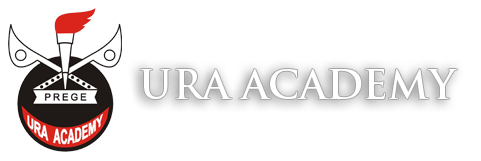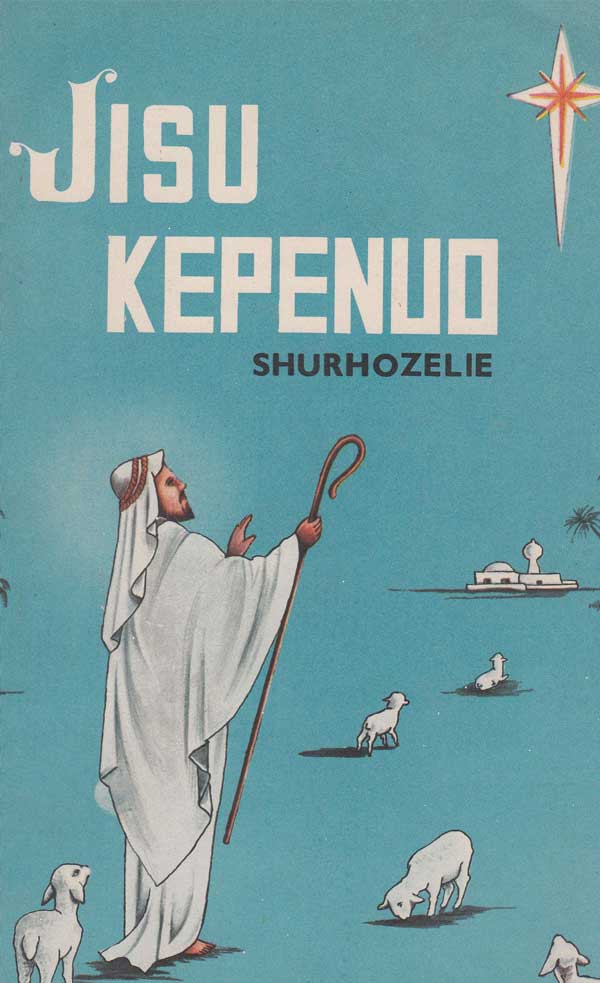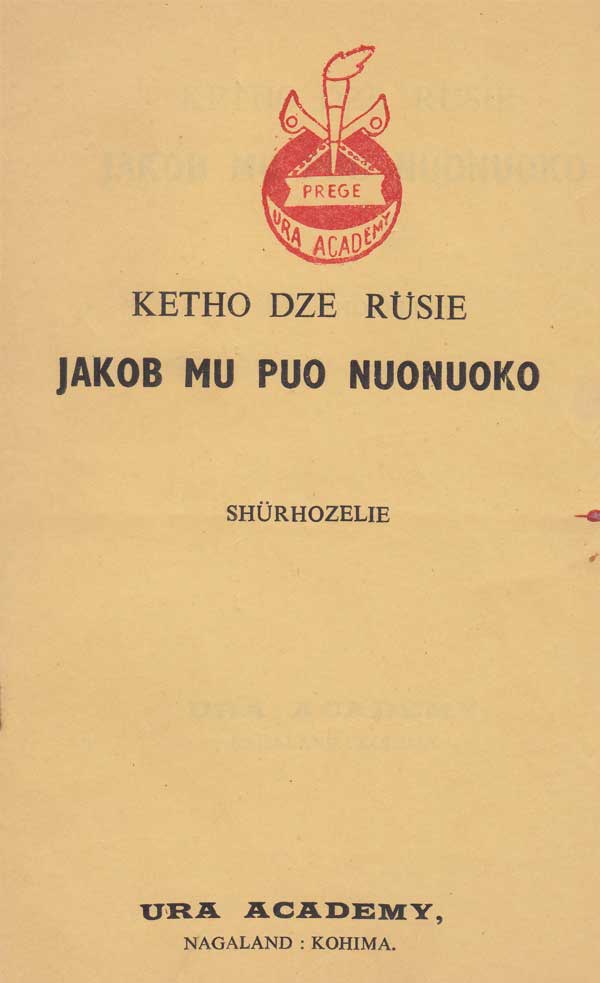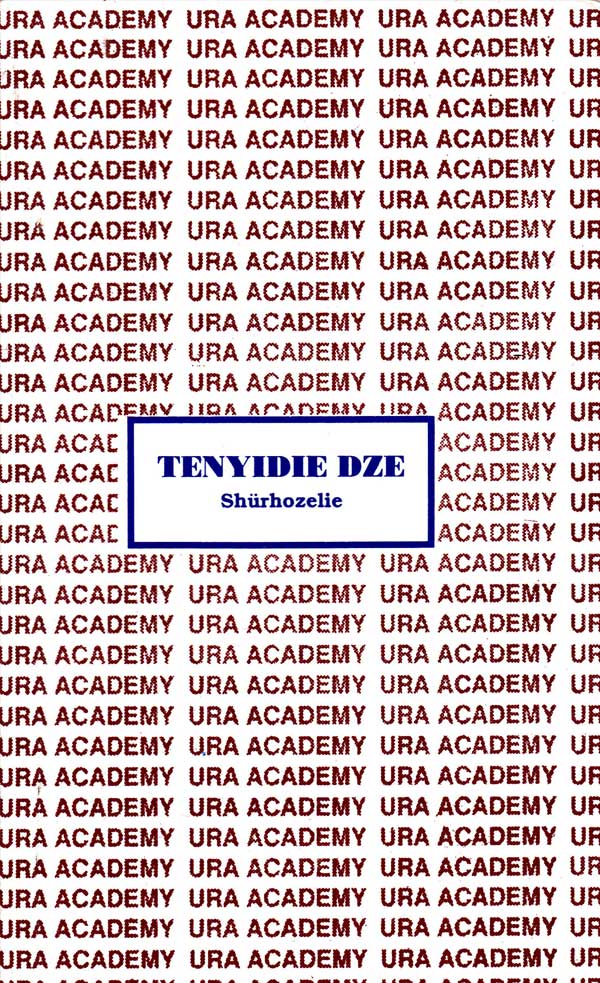History of Ura Academy
For many years, our forefathers lived without any contact with the outside world. After the British set up their permanent headquarters at Kohima in 1878, the first American missionary C.D. King arrived at Kohima on 25th February, 1881. He started a school in 1882. For the first three years, Assamese was said to have been taught in that small mission school. C.D. King introduced teaching Tenyidie in 1884. After C.D King, Dr. Sidney W.Rivenrburg came to Kohima and worked among our people for many years. The Kohima Mission School soon became very popular and many people sent their children to study in this school from almost all over Tenyimia areas including Semas of Pughoboto area. Those who studied in this Mission School learnt to read, write and speak Tenyidie very well. But when they went home they started writing in their own village accent and pronunciation. Therefore, the educated class could not communicate in writing due to different spelling patterns based on their own local pronunciation (for example: chϋlie (Tenyidie); tshϋlie (Kohima group); shϋlie (Khonoma group) thul (Southern Angami group); thiyi (Eastern Angami group); chϋnyie (Tuophema), etc.)
While observing this difficulty, Rev. J.E. Tanquist thought it necessary to garner public opinion to make decision for the common spelling pattern based on Tenyidie books written and translated by the missionaries. He, therefore, convened a meeting and constituted Angami Literature Committee in 1939 with Lhoulienyϋ Suokhrie as its Chairman, George W. Supplee as its Secretary, Rϋzhϋkhrie Sekhose, Krusiehu Belho and Neingulie Keditsu were the members. This committee was approved by the Deputy Commissioner of Kohima at that particular period of time, C.R Pausey.
This committee worked very hard from 1939 till 1948, the year the Indian government expelled George W. Supplee from India on suspicion for Naga political problem. During this ten years period, the committee finalized the basic structure of spelling and word division in Tenyidie, thus laid the foundation of Tenyidie of its standard form.
This committee worked very hard from 1939 till 1948, the year the Indian government expelled George W. Supplee from India on suspicion for Naga political problem. During this ten years period, the committee finalized the basic structure of spelling and word division in Tenyidie, thus laid the foundation of Tenyidie of its standard form.
The progress of development of Tenyidie was not very satisfactory for some years due to political disturbances in Nagaland. Though literatures do not grow under disturbed condition, yet some of our elders did their best to promote Tenyidie even under disturbed condition. In 1954, the Angami Vernicular Text Book Committee was constituted with Dr. Üzielie Peseyie as its Chairman and Rϋzhϋkhrie, Zhavise, Krusiehu and Neiliehu as members. This committee in consultation with the Angami Literature Committee selected Text books for use in schools. In the meantime, an advisory Text books Committee for Naga Hills was constituted with Deputy Commissioner as its Chairman and Deputy Inspector of Schools, Naga Hills as its Secretary. Other members were: Assistant Inspector of Schools, Naga Hills, Shillong, Nihoi Jakhalu and Dr. Neilhouzhϋ Kire. In 1954, one of the resolutions of this Committee says, “Resolved that the Registrar Gauhati University be moved to recognize the two major Naga Hills dialects, Angami and Ao as suitable text books are now ready for Matric Course.” We fully acknowledged the efforts put in by our elders in promoting Tenyidie even during the worst period in Nagaland.
On 23rd May, 1970, a group of Angami contractors and leaders had a picnic at Northern Angami Hall at Chϋziema. The meeting decided, among other things, to reconstitute Angami Literature Committee and nominated the following persons: Rϋzhϋkhrie Sekhose, Shϋrhozelie Liezietsu, Kezhagwelie Peseye, Beilieϋ Shϋya and Dr. H.V Sakhrie. The committee was also empowered to co-opt another four persons. Therefore, this newly constituted committee in its first meeting, on June 9, 1970 co-opted the following persons: Zhavise Vihienuo, Rev. Tsolie Chase, Neiliehu Belho and Vikeyieu.
One of the first programmed taken up by this committee was organizing a Tenyidie Seminar for language teachers in Kohima area from 9-11 March, 1971. Teachers from many schools participated with enthusiasm.
In 1971, the Angami Literature Committee took a major decision that the activities of the committee should cover not only development of literature but also the socio-cultural aspect of Tenyimia people as a whole. It was therefore, decided to change the name of the committee from Angami Literature Committee to Ura Academy. Accordingly, preparations were made and Ura Academy was Inaugurated on 6th November, 1971 by the then Chief Minister of Nagaland, Dr. Hokishe Sema.
The history of the Tenyidie is simple. In 1972, Ura Academy had taken decision to adopt words accepted by Tatar Hoho of the Federal Government of Nagaland like eno, eli, enoli, ahng, kilonser, etc. We have published those new words as well as coined words in Ura Dze and asked the people to practice using them. We were aware that language can be developed only through usage but it cannot be imposed on the population. After this first list published in 1972, we have decided not to coin new words.
The standard of Tenyidie which is in use now is based on the spelling and word division pattern framed by the first Literature Committee. We have updated few only to clear confusion between words like chü and cü; tse and tshe; pfe and pfhe. For this decision we have consulted the Central Institute of Indian Languages, Mysore. We have also consulted the work of Robbing Burlings, a linguist from Pensylvania University who came to Assam in the fifties and studied Garo language. During his stay in Assam, he met Dr. K.S. Tseikhanuo and recorded some Tenyidie words from him. After sometime, he produced a leaflet containing Tenyidie-English in which he uses words like cü (chü); cie (chie); pfe (pfhe), etc. his work was found to be in agreement with the recommendation of the CIIL, Mysore. Hence we have decided to change the spelling pattern much against the wishes of the people at the initial stage. But now younger generation is no longer in confusion to read Tenyidie. I would like to go one more step further, that is, the Bible in Tenyidie (Ketholeshü) is most widely read by the people. It was written before these changes in the spelling pattern were affected. Therefore, the old spelling pattern continues even after 37 years without any revision which creates confusions as of old. Now, Ketholeshü (Holy Bible) has been revised as per the changes indicated above and we want to place on record our appreciation for the step taken in this by the Angami Baptist Church Council.
Tenyidie is the first Naga language to be introduced at the University level. We encourage development of dialects (Kicha die) like Chokri, Kheza, Zemi, Liangmai, etc. But we recommend that while developing these dialects, one should take care of the aspect to link up with Tenyidie at the higher level. Take for example; the Rengmas have two distinct dialects. With the development of the two dialects, young Rengma people cannot understand one another. The only alternative for them is to converse either in English or the so called Nagamese. If so, we are going backward rather than going forward.
Therefore, one of our prime concerns is to create awareness among the people to realize the importance of learning Tenyidie. If the educated group, give due importance to Tenyidie, our objective can be achieved without much difficulty. The elderly people from Rengma area, Pughoboto area, Chakhesang area, Sopfümia area and Zeliang area can speak Tenyidie very well. Tenyidie is spoken in the Pochury areas of Myanmar even today. To perpetuate this trend, little attention is demanded from all Tenyimia people.






